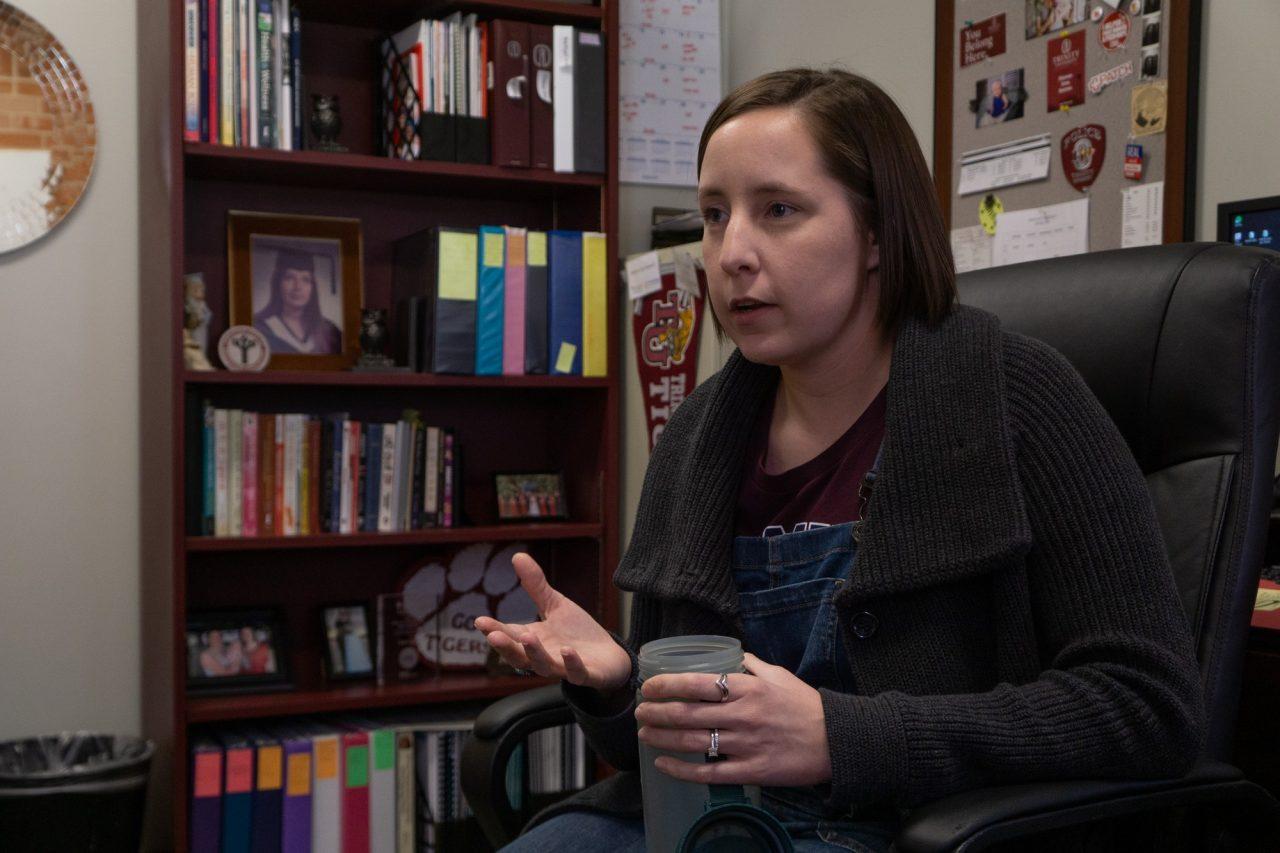Photo by Kate Nuelle
Over the course of a month, Wellness Services has administered two separate mental health surveys to randomly selected classes. The surveys either pertain to student stressors or general wellness, and are meant to assess the well-being of students on campus. By analyzing the data collected from these surveys, Wellness Services hopes to provide resources to students that reduce the stress of college life and improve general wellness.
Katherine Hewitt, wellness coordinator worked to administer the Health and Wellness survey and selected random classes to take the survey in order to achieve a representative sample.
“With the survey, we sampled 25 classes and our respondents were around 530 students, which is a pretty good representative sample. So that kind of gave a picture of what my office thinks that our students are struggling with, but the data sort of confirms or denies that,” Hewitt said.
Richard Reams, associate director of Counseling Services, is in the process of administering the survey on stressors and collected his sample in a similar manner.
“The methodology is one of having the Office of Institutional Research and Effectiveness give me a randomly selected list of courses, then I reached out to professors and asked if they would administer the surveys in class, during the final fifteen minutes of class. Most said yes, and those administrations have been happening for the past month,” Reams said.
According to William Ellison, assistant professor of psychology, surveying is a common method of data collection.
“Surveys can be quite valuable for collecting data about mental health, especially if you want to get a picture of a big group of people all at once (like a community of undergraduates, for instance). They are often used for public-health applications for just this reason.”
Surveys also allow for more honesty and transparency.
When it comes to mental health, some people are willing to be honest on a survey when they might be hesitant to discuss mental health issues face-to-face with someone (especially a relative stranger). However good surveys are with big groups, though, they’re maybe not the best way to understand a single individual’s mental health, because an individual’s responses on a survey may have to do with many different things in addition to their mental health,” Ellison wrote in an email interview.
While both surveys concerned the mental well-being of students, the questions they asked were slightly different in order to glean nuanced data from the student body.
“The survey that I coordinated and administered — same protocol, same procedure — is we got a select list of randomly selected classes and from all ages and all majors, so it was a pretty representative sample, looking specifically and more general mental wellness concerns and behaviors of our students. So there are definitely some questions about mental health specifically; however, this one is more inclusive. It looks at drinking and alcohol use. It looks at tobacco use, sort of substance use and misuse in general. But it was also looking at physical wellness behaviors, so students’ nutrition habits, for example, and physical activity,” Hewitt said.
Ellison explained that a researcher can know that a sample size is adequate by applying certain statistical theorems.
“There’s some math involved. The Central Limit Theorem, for instance, gives some guidance about how close the statistics from a researcher’s sample probably are to the same parameters in the greater population. Other questions about the sample and its relationship to the population are harder to answer (such as: how representative is the sample of the population? is it a random sample, or could it be biased in some way?),” Ellison wrote.
The stressor survey Reams administered focuses specifically on the causes of stress on campus.
“There are about 60 items that I have clustered under different groupings, including academic-related stressors, interpersonal-related stressors, financial-related stressors, worries about the future, health and wellness worries — such as being worried about a friend’s mental health. Most of the things in my survey are not things that I worried about 40 years ago as an undergraduate, and neither did my classmates. It is a different world that you and your classmates live in,” Reams said.
Through the data collected from these surveys, Wellness Services hopes to improve and introduce new programs aimed at improving student mental health.
“Well that would be the next step in terms of what kind of conversations we can have, at various levels about structurally we can change to make things less stressful, and I will give you a good example. Something that’s already happened this semester, not as a result of the survey, the minimum GPA to maintain scholarships has been reduced from 2.5 to 2.0. Well, that’s a huge structural change,” Reams said.
While this is the first year the stressor survey has been administered, the general wellness survey has been given on a yearly basis since 1998.
“It really is all about timing and capturing the right data,” Hewitt said about the General Wellness Survey. “The survey has historically always been administered at the start of a calendar year, and a lot of the questions ask about what happened fall semester, so that’s a really good reflective perspective. It is pretty much that a short time frame has passed, so students are able to reflect on what has happened fall semester, and it is a good representation of your usual day-to-day.”
Reams decided to give the new stressor survey in order to show others that the causes behind student stress are diverse and nuanced.
“The survey of stressors, I got the idea to do it because I hear a lot from students individually about stuff that stresses them. When I look at the research literature about student stress, oftentimes it pays no attention to some of the things that are in the mix of college students’ lives. And I don’t know that professors and parents and even students themselves realize the multifaceted sources of stress in students’ lives, beyond academics,” Reams said.







